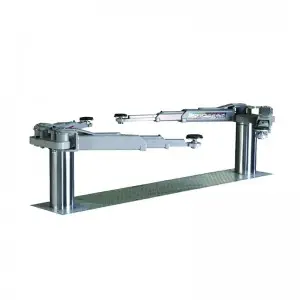****
In the ever-evolving world of automotive repair and maintenance, having the right equipment is essential for efficiency and safety. One of the most significant advancements in vehicle service technology has been the introduction of inground lifts. These versatile tools transform how mechanics work on vehicles, providing numerous benefits over traditional lifts. In this article, we will explore what inground lifts are, their advantages, installation considerations, and maintenance tips, ensuring that both professional mechanics and car enthusiasts understand why investing in this type of lift can be a game-changer for their operations.

Understanding the Benefits and Features of Inground Lifts for Automotive Shops: A Comprehensive Guide for Mechanics and Car Enthusiasts
What is an Inground Lift?

Understanding the Benefits and Features of Inground Lifts for Automotive Shops: A Comprehensive Guide for Mechanics and Car Enthusiasts
An inground lift is a type of vehicle lift that is installed within the ground, allowing vehicles to be raised for service while occupying minimal surface area. Unlike traditional above-ground lifts, which can take up valuable shop space, inground lifts are embedded in the floor, offering a clean and unobstructed workspace. These lifts typically consist of hydraulic systems that power the lifting mechanism and are capable of raising vehicles several feet off the ground, providing mechanics with ample room to perform inspections, repairs, and maintenance tasks.
Benefits of Inground Lifts
1. **Space Efficiency**: One of the most significant advantages of inground lifts is their space-saving design. Because they are installed below ground level, shops can utilize the overhead space for storage or additional work areas. This is especially beneficial for smaller garages or shops that struggle with limited space.
2. **Enhanced Safety**: Inground lifts often have a lower center of gravity compared to traditional lifts, making them more stable and less prone to tipping. Additionally, many models come equipped with safety features such as automatic locking mechanisms and hydraulic pressure control, ensuring that the lift remains securely in place during vehicle servicing.
3. **Improved Accessibility**: The design of inground lifts allows for better accessibility to the vehicle’s underside. Mechanics can easily slide under the vehicle without the need for cumbersome ramps or other equipment, allowing them to complete jobs more quickly and effectively.
4. **Aesthetic Appeal**: An inground lift contributes to a cleaner, more organized shop appearance. With fewer obstructions and equipment cluttering up the workspace, mechanics can create an environment that is not only functional but also visually appealing.
5. **Versatility**: Inground lifts are suitable for a wide range of vehicles, from passenger cars to light trucks. They can accommodate various lifting capacities and configurations, making them a versatile choice for shops that service different vehicle types.
Installation Considerations
While the advantages of inground lifts are clear, the installation process requires careful planning and consideration. Here are a few points to keep in mind:
– **Professional Installation**: It is crucial to have inground lifts installed professionally. The process involves excavation, plumbing, and electrical work that must adhere to local building codes and regulations. Failure to comply can lead to safety hazards or legal issues.
– **Space Requirements**: Before installation, shop owners must assess their available space. Inground lifts require a specific footprint and depth, so it is essential to measure accurately and account for any underground utilities that may be present.
– **Soil Condition**: The type of soil in which the lift will be installed can impact its stability and effectiveness. A geotechnical assessment is often recommended to ensure that the chosen site will support the lift’s load over time.
Maintenance Tips
To ensure that an inground lift operates effectively and safely for years to come, regular maintenance is essential. Here are some maintenance tips for inground lift owners:

Understanding the Benefits and Features of Inground Lifts for Automotive Shops: A Comprehensive Guide for Mechanics and Car Enthusiasts
1. **Routine Inspections**: Regularly inspect the lift for any signs of wear or damage, including hoses, hydraulic fluid levels, and electrical components.
2. **Clean the Area**: Maintain a clean workspace around the lift to prevent debris from interfering with its operation. Dirt and other contaminants can lead to mechanical failure over time.
3. **Check Safety Features**: Regularly test the safety features of the lift to ensure they are functioning correctly. This includes locking mechanisms and hydraulic pressure controls.
4. **Professional Servicing**: Schedule periodic professional servicing to address any potential issues and to keep the lift in optimal condition.
In conclusion, an inground lift is an invaluable investment for automotive shops looking to enhance their efficiency and safety. With significant benefits such as space optimization, improved accessibility, and enhanced aesthetics, mechanics can revolutionize their work environment. By understanding the installation requirements and adhering to maintenance protocols, shop owners can ensure that their inground lifts remain a reliable asset for years to come. Whether you are a seasoned mechanic or a car enthusiast, considering an inground lift could elevate your automotive service experience.Inground lift



